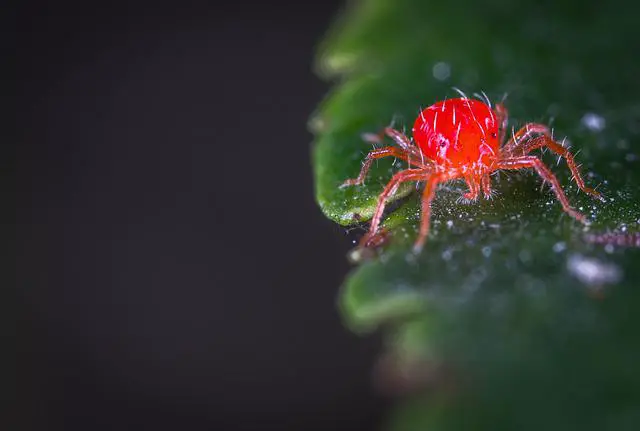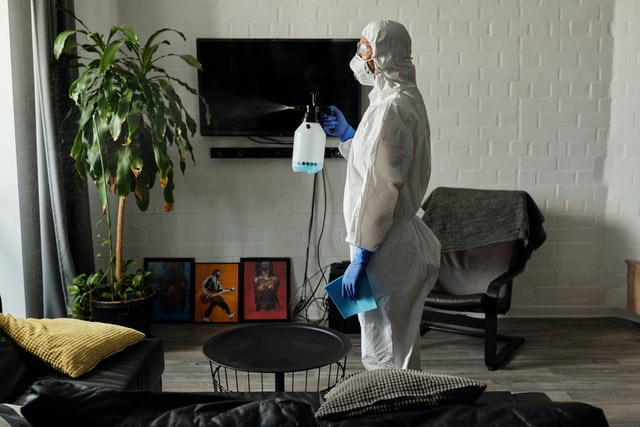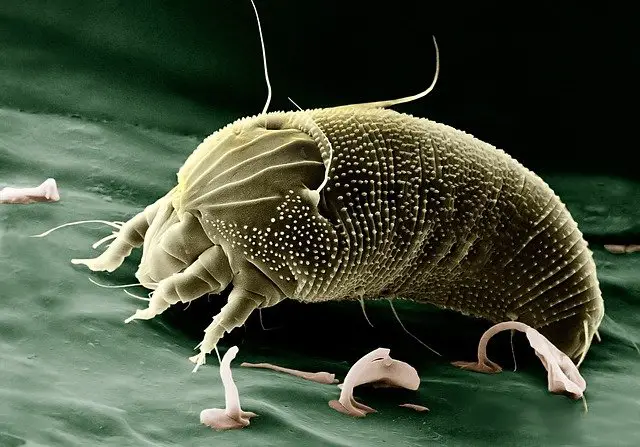Have you ever wondered, can spider mites live without plants? We often see these insect invaders living on houseplants, but is it possible for them to spread to your couch and even your bed? Imagine finding one of these insects on your pillow! Spider mites are a common problem on both indoor and outdoor plants.
Spider mites are almost always found on plants. You might occasionally see one or even a few on the surface around the plants, but these will be climbing on and off the plants to feed. They may have fallen off the leaves, but they will soon get back on the plant.
Can Spider Mites Live Without Plants?

Spider mites cannot live without plants, no. They feed on plants, so if they find themselves in an environment without plants, they will quickly leave it and go in search of plants elsewhere. If they don’t find them, they will soon die.
That might leave you wondering if you can get rid of spider mites by removing the plants. The answer is that you may be able to, but you will also need to treat the plant or you will simply be moving the problem from one part of your home to another – because there will be mites on the plant.
Even if you can’t see mites, some will be there; they are so small, they can hide effectively. Their eggs are also too small to see with the naked eye, and will be stuck to the undersides of your plant’s leaves. You may be able to remove the adults by hand, but if the eggs are still there, your plant will soon be infested again.
You can treat spider mites using a variety of techniques, including:
- Neem oil
- Regular cleaning
- Soap
- Humidity
Let’s explore these options!
1. Neem Oil
Neem oil is a very effective means of pest control, and a lot of people use this to protect their plants from spider mites. It can help with both prevention and eradication. It tends to be readily available, and it has become very popular in the plant world for getting rid of insects and pests.
You can use neem oil in conjunction with the other methods, or on its own. Be aware that you may need several treatments to effectively get rid of spider mites, especially if you just use neem oil.
To treat your plant using neem oil, you should mix it with water and then spray or wipe the leaves, as described by GreeneryUnlimited. The oil needs to physically touch the spider mites to work. It will coat their skins and suffocate them.
2. Regular Cleaning

Keeping your plants clean and free from dust is a great way to both repel spider mites and make it harder for them to live on your plant once they are there. If you have plants with big leaves, such as Monsteras, cleaning will be even more important.
You should get a damp cloth and regularly wipe down the leaves of the plant to remove the dust that will build up there. Do this once a week, or more often if your home is quite dusty.
Spider mites love dusty environments, so by keeping the leaves clean, you protect your plant from attacks and help it to fight off existing invaders.
3. Soap
Soapy water is a classic method for getting rid of insects on plants, and it works against spider mites. It’s also easy to apply. Simply dilute some dish detergent with water, pour it into a spray bottle, and spritz the plant’s leaves thoroughly.
The soap will coat the bodies of the spider mites and suffocate them. You may have to repeat this process a few times, especially for a bad infestation, as some will likely escape from the soap and survive to keep breeding. GetBusyGardening suggests this form of pest control.
You might also want to wash small plants in soapy water, as this will more effectively coat the leaves. Fill your sink with soapy water, and then turn the plant to an angle that allows you to submerge the leaves without losing too much soil from the container. Rinse the leaves back and forth, and then lift the plant out and put it somewhere warm to dry.
4. Humidity
Spider mites don’t like a humid environment, so keeping your plant damp is a good way to fight them off. You can achieve this by regularly misting the leaves with a plant sprayer, or by putting a dish of water near your plant. The water will gradually evaporate and mist the leaves as it does.
Make misting a part of your plant care routine, and pay particular attention to it when the weather is dry. This is when your plant will be at its most vulnerable to mites.
Note that on its own, misting will not deter an existing population of mites, but used alongside other methods, it will help you to get rid of them, and it makes them less likely to infest the plant at all.
Signs of Spider Mite Infestation on Plants
Spider mites are tiny and may not be visible to the eyes. Nevertheless, you can tell if they’re beginning to attack your plants by their symptoms. Here are some of the signs you’ll notice:
- Tiny webs are beneath the plant leaves and at the stem corners.
- White spots on different parts of the leaves
- Leaf discoloration
- Curling, drying, and dropping of leaves
- Slow or stunted plant growth and wilting.
How to Prevent Spider Mite Infestation
There’s a possibility that spider mites will infest your plants again if the conditions are favorable for them. To prevent them from coming back, here are some simple tips to follow.
- Avoid overwatering your plants, as it can create the perfect environment for spider mites to thrive.
- Once you notice a plant, separate it from the healthy ones to keep them safe.
- Since spider mites thrive in dry environments, increase the humidity around your plants. To achieve this, consider using a humidifier or misting the plants as often as possible.
- Create enough space among your plants to ensure air circulation. So if spider mites attack a plant, the infestation will not spread to other healthy plants quickly.
- Provide your plants with enough water, light, and fertilizer to keep them healthy. Unhealthy plants are usually more attractive to spider mites and other pests.
Also read: Do Earthworms Lay Eggs?
Summary
So, the answer to the question “can spider mites live without plants” is no, they can’t. If you want to get rid of spider mites, you need to make your plants inhospitable to them, because without plants, they have no food – and without food, they will quickly die. They need to feed regularly, so if you take away their food, the mites cannot infest your home.
Frequently Asked Questions
Can spider mites live on surfaces?
No, spider mites cannot survive for very long on a surface with no plants, regardless of the material. They need to feed on plants regularly if they are to stay alive.
Sometimes, spider mites can go into a dormant state that allows them to conserve energy, and the females are particularly good at surviving – but even then, they will die in less than two weeks if they don’t have a plant. In some cases, eggs can last longer, but the larvae will die soon after hatching.
That means that if you remove the plants from an area, the mites will not continue to live in that area.
Can spider mites come out of nowhere?
Spider mites cannot just appear on a plant; they have to have been transported to the plant somehow. One of the commonest explanations for spider mites appearing on a plant is that you have brought in another plant that was already infested. It is often very hard to see spider mites until the conditions are good for them and they multiply.
That means you may contaminate your existing plants with a new plant. Alternatively, spider mites can be transported to your plants on your shoes or your clothes, or they can be blown in on a gust of wind.
Can spider mites infest a house?
No, spider mites will not infest your house. They are only interested in your plants and they will cover any plants that they can find. However, they cannot survive in other parts of your house. Once they fall off the houseplants or crawl away from them, they will quickly die.
Spider mites can only feed on plants. They therefore need plants to survive. They cannot store food in their bodies and last for long periods without it, so it isn’t possible for them to infest your home if you remove the plants.

Hey, I’m Lisa and I’ve been an avid gardener for over 30 years. I love writing, talking and living in the garden! Feel free to connect with me on my socials below

